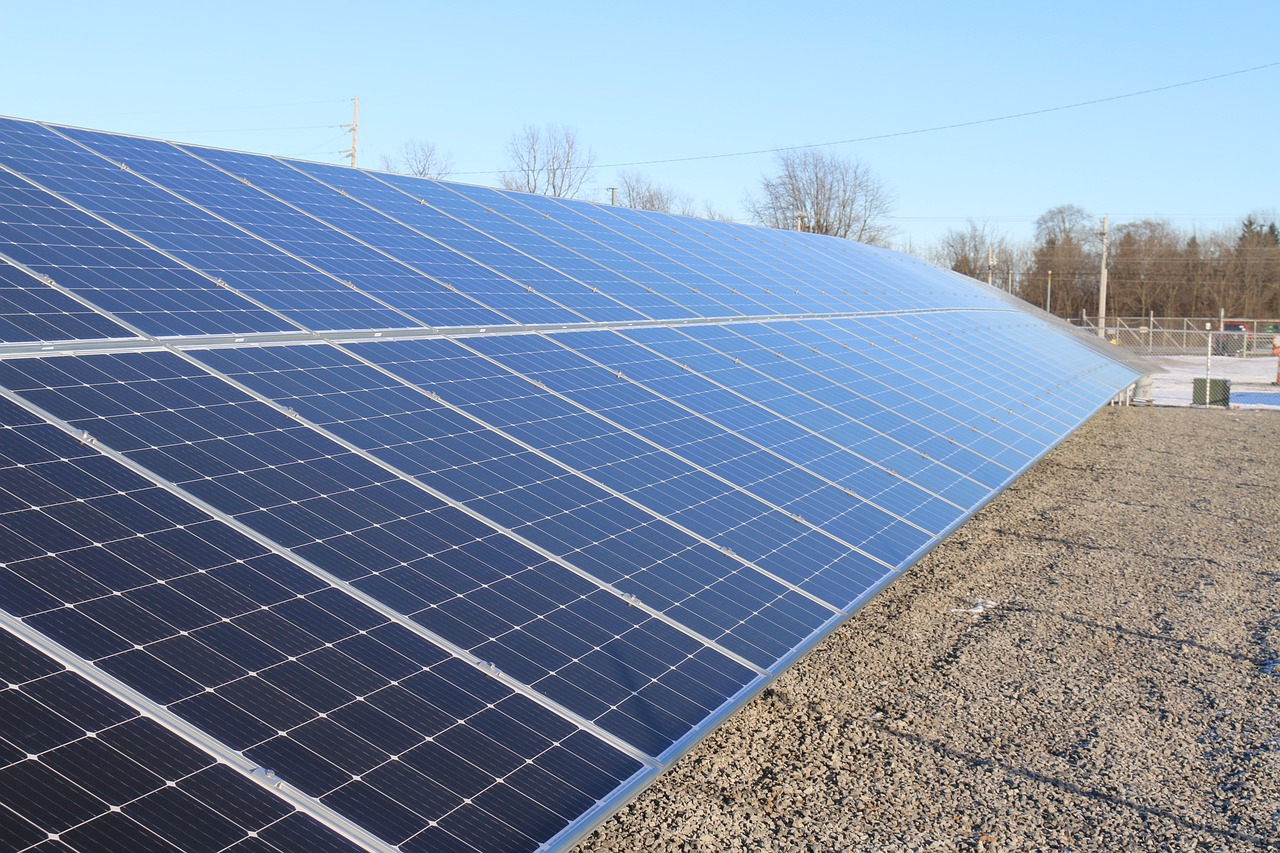
The development of next-generation solar panels represents a crucial step towards a sustainable future, where renewable energy sources play a pivotal role in reducing our reliance on fossil fuels. While the advancements in solar technology hold immense promise, they are accompanied by a set of challenges that researchers and engineers must navigate. This blog explores both the challenges and opportunities in the development of next-generation solar panels.
Challenges in the Development of Next-Generation Solar Panels
- Efficiency Improvements: One of the primary challenges is enhancing the efficiency of solar panels. Current silicon-based solar panels have an efficiency ceiling of around 22-25%. To make solar energy more competitive with traditional energy sources, researchers are exploring materials and technologies that can push efficiency beyond this limit. However, achieving higher efficiencies often involves complex and costly processes.
- Material Limitations: The development of new materials, such as perovskites, has shown promise in improving solar panel efficiency. However, these materials can be unstable and degrade quickly under environmental stressors like heat, moisture, and UV radiation. Ensuring the long-term stability and performance of these materials is a significant challenge.
- Manufacturing Costs: The cost of producing advanced solar panels remains a major hurdle. While the price of conventional silicon panels has decreased significantly over the past decade, new technologies often require expensive materials and sophisticated manufacturing processes. Scaling these technologies to mass production while keeping costs low is a key challenge.
- Environmental Impact: The production and disposal of solar panels have environmental implications. The use of toxic materials in some next-generation panels and the energy-intensive manufacturing processes can offset some of the environmental benefits of solar energy. Developing sustainable manufacturing methods and ensuring proper recycling of panels are critical to minimizing their environmental footprint.
- Energy Storage: Solar energy is intermittent, relying on sunlight, which is not available at all times. Effective energy storage solutions are needed to ensure a steady power supply. While battery technology is advancing, integrating efficient and cost-effective storage with solar panels remains a challenge.
Opportunities in the Development of Next-Generation Solar Panels
- Advanced Materials: The exploration of new materials, such as perovskites, organic photovoltaics, and quantum dots, offers significant opportunities to enhance the efficiency and lower the costs of solar panels. These materials have the potential to revolutionize solar technology with their unique properties and ease of fabrication.
- Bifacial Solar Panels: Bifacial solar panels can capture sunlight from both sides, increasing energy generation without requiring additional space. This technology can significantly boost the overall efficiency of solar installations, making them more attractive for both residential and commercial use.
- Flexible and Lightweight Panels: The development of flexible and lightweight solar panels opens up new possibilities for integrating solar technology into a variety of surfaces, including building facades, windows, and even clothing. This versatility can expand the application of solar panels beyond traditional rooftops.
- Smart Solar Panels: Integrating smart technology into solar panels allows for better monitoring and optimization of energy production. Smart panels can adjust their orientation, track the sun, and detect faults, improving overall performance and reliability.
- Energy Storage Innovations: Advancements in energy storage, such as solid-state batteries and other innovative storage solutions, present opportunities to address the intermittency issue of solar energy. Combining next-generation solar panels with cutting-edge storage technologies can provide a more consistent and reliable energy supply.
- Government Incentives and Policies: Many governments are implementing policies and incentives to promote the adoption of renewable energy. Subsidies, tax credits, and research funding can accelerate the development and deployment of next-generation solar panels, making them more accessible to a broader audience.
- Global Market Expansion: The global demand for renewable energy is rising, creating a vast market for advanced solar technologies. Emerging markets, in particular, offer significant growth opportunities as they seek sustainable energy solutions to meet their increasing energy needs.

The Benefits of Solar Panels for the Indian Population
India, with its abundant sunlight, vast geographic diversity, and growing energy needs, is uniquely positioned to benefit from solar energy. As the country continues to pursue sustainable development and energy independence, solar panels offer numerous advantages for its population. Here are the key benefits of solar panels for the Indian people:
1. Energy Access in Rural Areas
A significant portion of India’s population lives in rural areas, many of which have limited or unreliable access to electricity. Solar panels provide a decentralized solution to this problem, enabling rural communities to generate their own electricity. Solar microgrids and individual solar home systems can power homes, schools, and health centers, improving the quality of life and economic opportunities in these regions.
2. Reduction in Electricity Costs
India has a high demand for electricity, leading to frequent price increases. Solar panels can help reduce electricity bills for households and businesses by generating power from a free and renewable source. Over time, the savings from reduced energy costs can offset the initial investment in solar installations, making it an economically viable option for many.
3. Environmental Benefits
India faces significant environmental challenges, including air pollution and climate change. Solar energy is a clean and renewable resource that produces no greenhouse gas emissions during operation. By reducing reliance on fossil fuels, widespread adoption of solar panels can contribute to improved air quality and a reduction in the country’s carbon footprint.
4. Energy Security and Independence
India imports a large portion of its energy resources, making it vulnerable to global market fluctuations and supply disruptions. Solar panels can enhance energy security by diversifying the energy mix and reducing dependence on imported fuels. This shift can help stabilize the energy supply and insulate the economy from international energy price shocks.
5. Job Creation and Economic Growth
The solar industry has the potential to create millions of jobs across various sectors, including manufacturing, installation, maintenance, and research and development. As the industry grows, it can stimulate economic activity and provide employment opportunities, particularly in rural and semi-urban areas where job creation is critically needed.
6. Support for Government Initiatives
The Indian government has set ambitious targets for renewable energy, aiming to achieve 175 GW of renewable energy capacity by 2022, with 100 GW coming from solar power. Programs such as the Jawaharlal Nehru National Solar Mission and various state-level initiatives offer incentives, subsidies, and support for solar adoption. These initiatives make solar energy more accessible and affordable for the population.
7. Technological Advancements
The rapid advancement of solar technology is making solar panels more efficient, affordable, and versatile. Innovations such as bifacial panels, thin-film technologies, and energy storage solutions are enhancing the performance and applicability of solar systems. As technology continues to evolve, the benefits of solar energy will only increase, making it an even more attractive option for Indian households and businesses.
8. Resilience to Climate Change
India is highly vulnerable to the impacts of climate change, including extreme weather events and changing weather patterns. Solar energy systems can provide a resilient and reliable source of power, particularly in remote and disaster-prone areas. By decentralizing the energy supply, solar panels can help communities better withstand and recover from climate-related disruptions.
The development of next-generation solar panels is a complex yet promising endeavor. While there are substantial challenges to overcome, the opportunities for innovation and impact are immense. By addressing efficiency, cost, and sustainability issues, the solar industry can pave the way for a greener and more sustainable future. Collaboration between researchers, manufacturers, and policymakers will be crucial in harnessing the full potential of next-generation solar technology.


